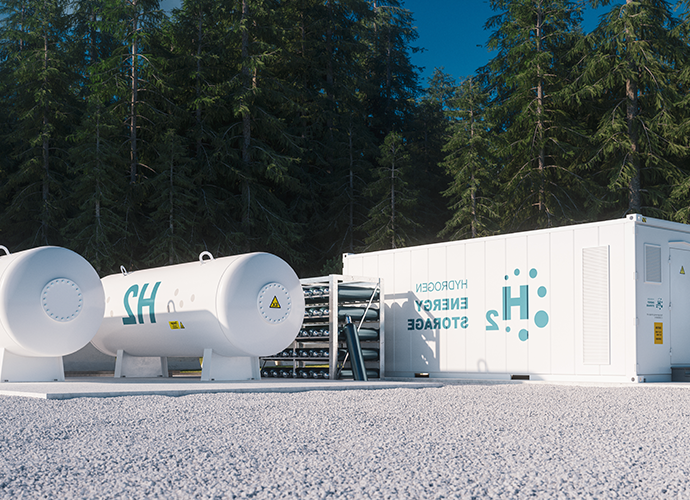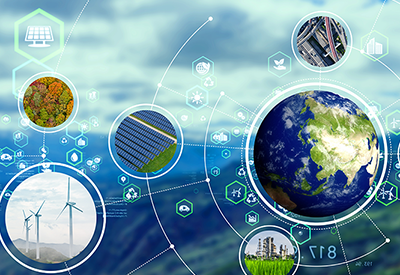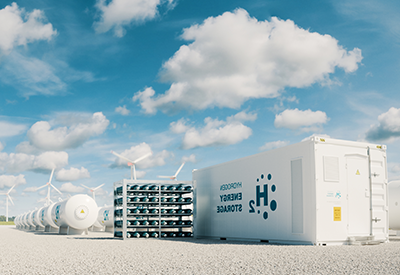Nowhere, perhaps, is the decarbonization journey undergoing more of a seismic shift than in the development and refinement of alternative fuel sources. While users have traditionally been relegated to few options other than diesel, biodiesel and natural gas, progress is being made on several fronts to expand those choices dramatically.
For years, SMS Equipment has been closely monitoring developments in the field of alternative fuels, recognizing it as the “new normal” it is sure to become. To that end, we’ve assembled a highly-skilled, well-informed team to help our customers understand what will — and won’t — meet their needs today and moving forward. Many innovative solutions will require time to mature, develop a supporting infrastructure, gain widespread acceptance, etc. The current, readily available options, however, can prove an ideal starting point for any forward-thinking company seeking to address the issue of decarbonization.
The road less travelled is soon to get very crowded. Let SMS Equipment help you consider the alternatives.
-
Equipment
Construction Equipment SolutionsWhether you're digging foundations or building communities, our reliable equipment delivers precision for construction work. Select from top brands like Komatsu, BOMAG, and Takeuchi, plus custom attachments to ensure you have the right tools for the job.Forestry Equipment SolutionsBalancing economic harvesting with sustainable forest management is key to preservation. With rugged, purpose-built forestry equipment from TimberPro and Komatsu, you can manage just that. Our team is ready to assist you no matter how remote your site is.Landscaping Equipment SolutionsDense urban areas can limit your ability to work efficiently, but our compact solutions from trusted brands like Takeuchi can help you navigate tightly confined spaces with the horsepower you require.Municipal Equipment SolutionsReliable equipment keeps communities running efficiently. Whether its for waste management, snow removal, or park maintenance, we supply trusted brands like Komatsu, BOMAG, and Takeuchi, with flexible warranties, on-site support, and smart technology to meet your needs.Surface Mining Equipment SolutionsSurface mining operations are increasingly complex. Whether you’re greenfield, brownfield, or fully operational, we have the equipment and technology solutions you need from the world’s leading brands like Komatsu — from haul trucks and dozers to loaders and more.Underground Mining Equipment SolutionsHelping meet the world’s need for resources requires reliable equipment and responsive support. With SMS Equipment, you’ll have a trusted partner that delivers both, by working together to maximize your productivity.Road Construction Equipment SolutionsIn the tough business of road construction, you need industry-leading heavy equipment products from trusted brands like Komatsu and BOMAG. Along with our on-site support teams, we’ll help you get your job done on time and on budget.Waste Management Equipment SolutionsWhether it’s for garbage compaction, landfill management, or transfer stations, we’re proud to offer purpose-built waste management equipment from BOMAG and Komatsu that meets your specific needs.Pre-owned Equipment SolutionsYou don’t have to buy new to get the job done right. We’re proud to offer pre-owned equipment from some of the world’s leading brands.RentalsAttachments of Every TypeWhether you’re looking for concrete pulverizers or harvesting heads, we’re proud to offer a complete range of attachments that meet your needs — as well as your standards.
-
Parts
Buy Parts OnlineWe provide support for all areas of your equipment, including powertrain, hydraulic systems, lighting, operator environment, undercarriage, electrical systems, cooling systems and more. Our network of parts and components is fully integrated between our branches and our manufacturers as well as with other distributors throughout North America.UndercarriageSMS Equipment has undercarriage repair centers that perform track pad swaps, turn pins and bushings, rebuild idlers, rollers and re-grouser track pads. We offer a practical management approach to ensure you achieve the best performance and durability from your undercarriage components.AttachmentsSMS Equipment holds a unique position in the industry as a one-stop supplier of the most complete range of attachments for your equipment.
We offer only world renowned brand names that meet your standards of reliability and productivity.
Ground Engaging Tools & Wear PartsSafety EquipmentAt SMS Equipment, one of our core values is to care for each other without exception. We strive to set exceptional standards within our industries to demonstrate care for all internal and external stakeholders. We are proud to distribute and partner with business partners, providing you and your employees with exceptional safety products. -
Services & Support
Maintenance & RepairRebuilding & ManufacturingWarrantiesFinancingFleet Management
-
Technologies
By Industry
-
News & Resources
News & Resources
-
Company
Locations/Contact Us















































